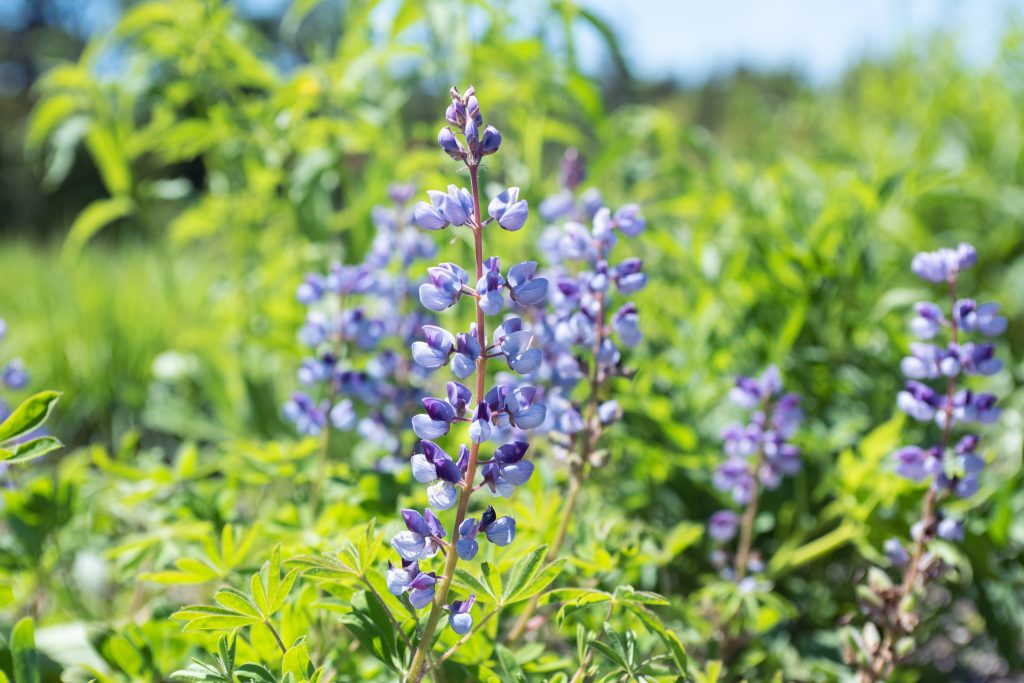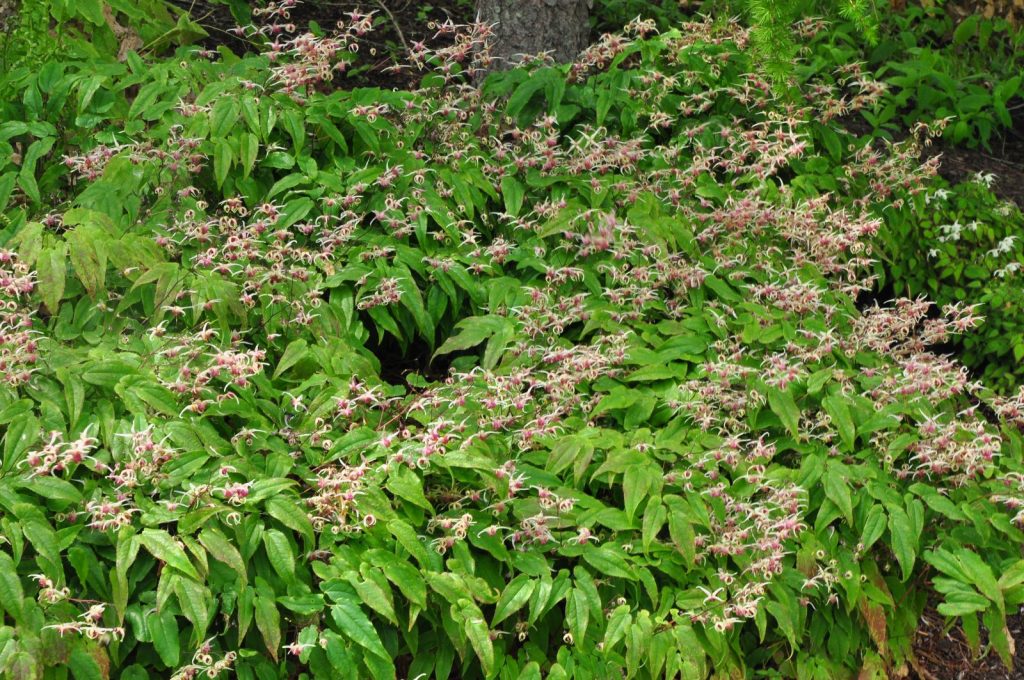If you were disappointed because you thought gardening season was over, well, I have good news for you, my friends—especially if you’ve been wondering how you could do more to encourage native plants in your yard. I recently sat down with the Gardens’ Director of Horticulture, Andy Brand, and got the low-down on three great native perennials you can plant right now.
Three Native Perennials to Plant Now
- Native goldenrod: I know what you’re thinking, but goldenrod is NOT the dastardly cause of your seasonal allergies. “That’s ragweed,” says Andy, a wind-pollinated plant that blooms around the same time. “Goldenrod is insect-pollinated and the pollen drops to the ground instead of being released into the air.”
Why goldenrod? It’s a pollinator favorite and blooms from mid-to-late summer into autumn. Plus, it’s stunning and pretty easy to grow. Just be careful to choose clump-forming or slowly spreading species. Some species can spread aggressively by rhizomes, creating very big patches. A couple of Andy’s favorites include: zigzag goldenrod (Solidago flexicaulis), blue-stemmed goldenrod (Solidago caesia), or Firewoeks wrinkleleaf goldenrod (Solidago rugosa ‘Fireworks’).
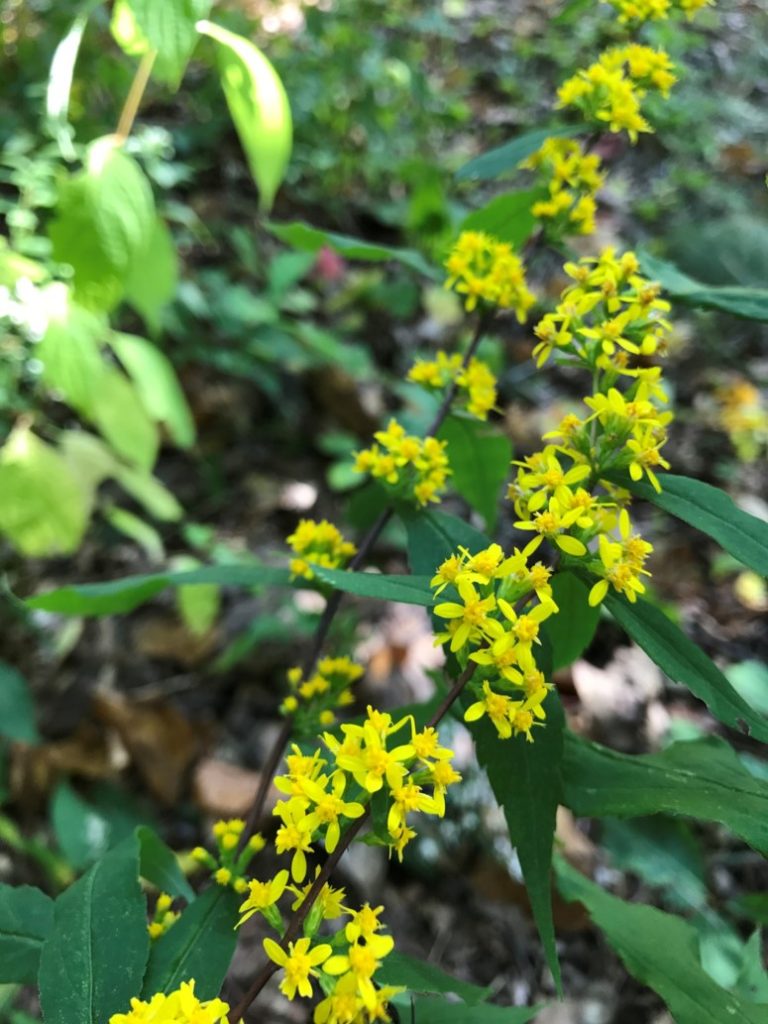
Solidago caesia
- Black chokeberry (Aronia melanocarpa) supplies great fall color and is an easy, adaptable shrub, fine in full sun to part shade (in other words, there’s probably a space in your yard just perfect for it). It also supplies fruits, high in nutrition and antioxidants, commonly used in smoothies and health drinks. How healthy? “It’s higher in antioxidants than blueberries,” says Andy. But this is a super-astringent fruit, so many people avoid eating it raw (but the good news is that the internet abounds with recipes—just try searching!).
**By the way, if edible natives are of interest to you, we have a great upcoming class for you to try: Edible Natives to Grow at Home with Andy himself!
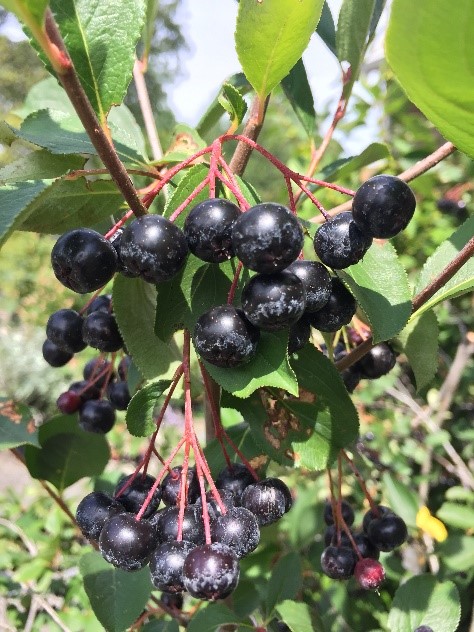
Aronia melanocarpa fruit
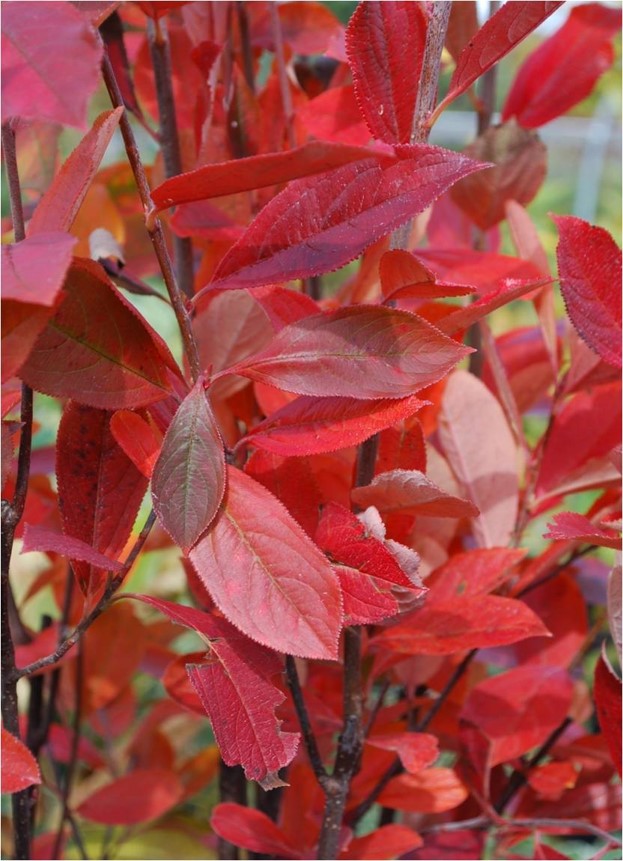
Aronia fall color
- Bottle gentian not only provides a lovely and remarkable bloom, it’s popular with bumble bees—and watching them navigate the plant’s unusual bloom? “They basically have to be acrobats,” says Andy. “It’s fun to watch them force themselves into each bloom, disappear completely, then pop back out.” For plant-lovers like all of us, that’s entertainment! Try closed gentian (Gentiana clausa)—it flowers late and is quite easy to grow, assuming you give it a moist habitat, full-sun to part-shade.
